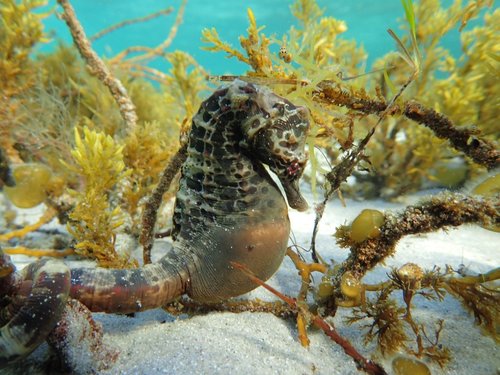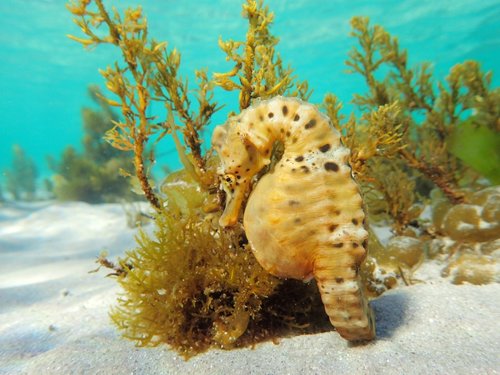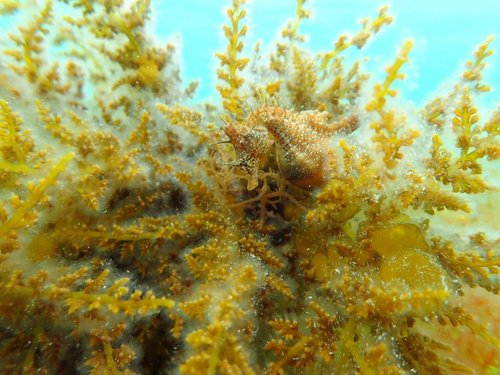Two Big-bellies and one Short-head in Australia
Our latest featured iSeahorse observation is a trio of scenic snapshots nabbed by iSeahorse user sharejosie, aka Josie Jones. She saw all three seahorses - two Big-belly seahorses (H. abdominalis) and one Short-head seahorse (H. breviceps) - between October 6th and 8th in Melbourne, Australia. Both species are unique to the region, with H. abdominalis found in New Zealand as well.


H. abdominalis

In addition to their homeland, these seahorses share several traits - for one, neither is always entirely faithful to their mate, despite the Hippocampus genus’ habit of monogamy. Big-bellies have been described as “socially polygamous but genetically monogamous” in that they dance with multiple partners, but mate with just one. And in captivity, male Short-head pouches sometimes contain eggs from multiple females - although scientists are unsure if this behaviour is also found in wild populations. It can take as little as minutes up to two and a half days for a short-head pair to mate!
The two species are also both habitat generalists, unlike a lot of seahorses, meaning that they live in many different types of habitats. Big-bellies will even gather around artificial structures, such as the anti-predator nets surrounding aquaculture salmon pens! Plus, they are both pretty mobile compared to a lot of Hippocampus members, with the Big-bellies considered strong swimmers (by seahorse standards), and the Short-head able to travel by wrapping their tails around floating macroalgae. Considering that Big-bellies in captivity have been found to die if temperatures reach 26 degrees, the ability to disperse and survive in different ecosystems could be useful if warming waters make regions of their range inhospitable.
Both Big-belly and Short-head seahorses were considered Data Deficient by the IUCN Red List prior to 2017. Now, these species are both listed as Least Concern. Posting pictures like these ones to iSeahorse truly helps contribute to the body of information on seahorse biology needed for boosting species from Data Deficient to a more informative label, which allows us to initiate effective conservation actions.
Thanks for sharing, sharejosie!
To learn more about these species, check out the brand-new IUCN Red List website!
Big-belly seahorse (Hippocampus abdominalis):
https://www.iucnredlist.org/species/10057/54903879
Short-head seahorse (Hippocampus breviceps):
https://www.iucnredlist.org/species/10063/54904334
View the original observations here:
https://www.iseahorse.org/Observations/Details/17527172









Comentarios
Añade un comentario